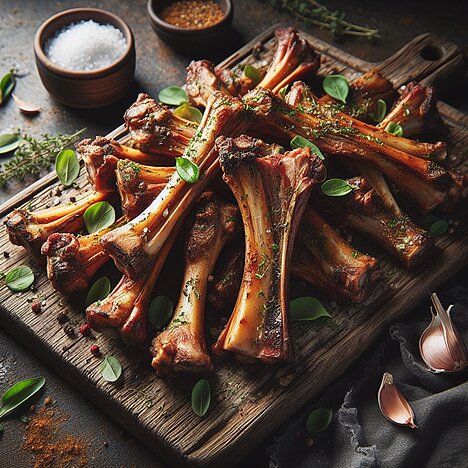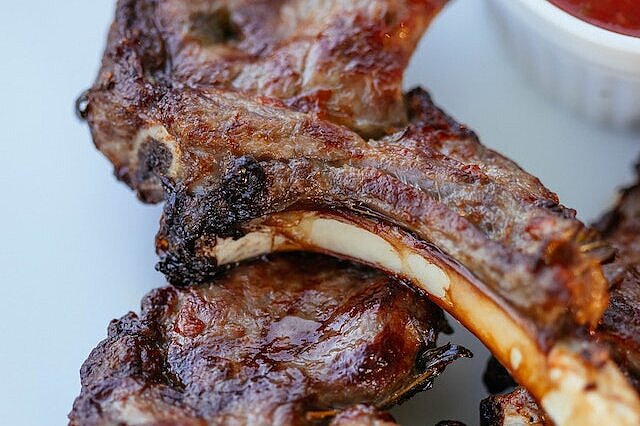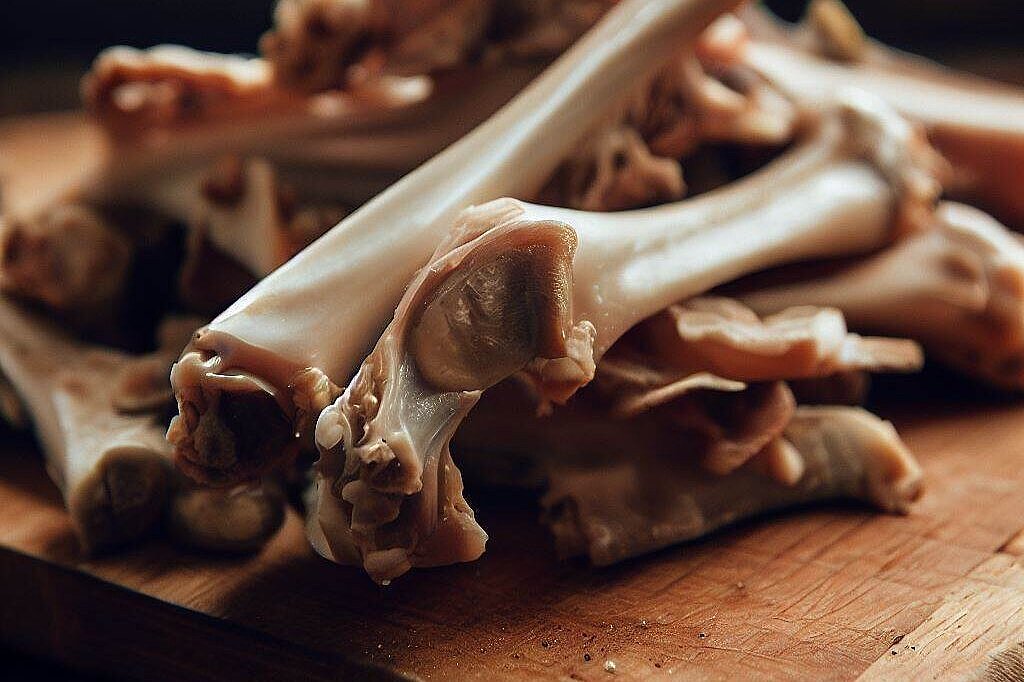Pork bone

Pork bones are a popular yet controversial addition to a dog's diet. In this article, we would like to explain the advantages and disadvantages of pork bones so that you can make an informed decision.
What are pig bones?
Pork bones are, as the name suggests, bones from pigs. They are rich in minerals such as calcium and phosphorus, as well as cartilage, connective tissue and fat. Most pork bones are sold raw and can be fed either raw or cooked.
Benefits of pork bones for dogs
Pork bones can be a healthy and natural addition to a dog's diet. Here are some of the benefits that pork bones can provide for dogs:
- Dental care: chewing on bones can help remove plaque and tartar. Chewing on bones is a natural way to care for teeth and can help prevent dental problems.
- Nutrients: Pork bones are rich in nutrients such as calcium and phosphorus, which are important for bone and tooth growth. Bones can also contain other minerals and vitamins.
- Occupation: Dogs have a natural need to chew and nibble. Bones can serve as an occupation and satisfy the dog.
Disadvantages of pork bones for dogs
In addition to the advantages, there are also some disadvantages that should be considered when feeding pork bones:
- Risk of injury: pork bones can splinter when chewed and therefore pose a risk of injury to the dog. It is therefore important that the dog is supervised when chewing.
- Digestive problems: Dogs can develop digestive problems if they swallow too large pieces of bone or ingest too much bone meal. The fat in the bones can also cause diarrhea or vomiting.
- Dental problems: Although bones can serve as natural dental care, chewing on bones can also lead to dental problems, especially if the dog already suffers from sensitive teeth or gingivitis.
Pork bones can be a healthy addition to a dog's diet when fed in moderation and with attention to the risks of injury and digestion. It is important that the dog is supervised when chewing and is only given bones of appropriate size and consistency.
If you notice any signs of hypersensitivity or poisoning in your dog, you should see your vet immediately. We are not a substitute for a vet, but we try to be as accurate as possible. Every dog reacts differently and we recommend you get a second opinion or consult your vet if in doubt.
Stay healthy and take good care of your four-legged friend!😊
Similar to Pork bone
Fleshy bones are bones that still contain a lot of meat, tendons, cartilage and skin. They are not to be confused with pure bones, which contain little or no meat. Meaty bones can come from...
Poultry bones are the bones of chickens, turkeys, ducks or other birds that are used as a source of meat. They can be raw or cooked, with or without meat and skin. Poultry bones have a different...
Not all bones are the same. There are different types of bones that vary in size, shape, hardness and composition. Depending on the type of bone you give your dog, this can have different effects on...
Bone meal is a powder made from crushed animal bones. It can come from different animal species, for example cattle, pigs or poultry. Bone meal contains a lot of calcium and phosphorus, which are...



